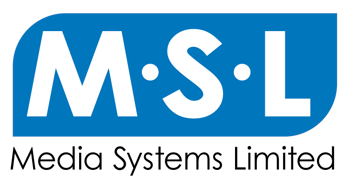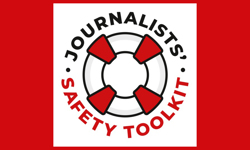
From streamlined DTC supply chains, to mainstream and micro-syndication opportunities, advanced DAM can transform the fortunes of publishers of all sizes.
But it isn’t as easy as just choosing the ‘best’ DAM system from the wide selection on the market. That only addresses the ‘digital’ side of digital transformation. It’s the ‘transformation’ side that delivers the real business benefits.
Based on almost 30 years’ experience transforming publishing operations, here are our tips for any publisher considering a Digital Asset Management platform – so you can leverage this transformative tech to achieve your strategic goals.
Key takeaways
- DAM can unlock new business models and revenue growth for publishers
- Don’t limit yourself – see the bigger picture for true digital transformation
- Strategic and operational alignment are both key to success
- Long-term commitment drives lifelong value
- People are as important as technology
Four stages to DAM successful DAM
1. Planning
If you’re set on implementing a DAM solution, it’s tempting to jump straight into the marketing literature and start shortlisting. But you’ll achieve better, longer-lasting results if you step back and think about strategy first.
One of the main reasons DAM implementation fails is a lack of strategic alignment. DAM isn’t a destination to be arrived at, it is a way of arriving at your desired destination. If you’re not clear on the strategic objectives you want DAM to help you achieve – beyond ‘better digital asset management’ – then you’ll be entering the process blindfolded.
The first step toward true digital transformation is aligning to your organisation’s direction of travel - whether that’s aiming for ambitious growth or a conservative cost-saving strategy - and learning how software can support those goals.
It can help to use an external IT consultant at this stage, to understand the bigger picture of digital transformation. In our experience, ambitious organisations rarely implement DAM in isolation. The ability to integrate a DAM system with adjacent tech – like editorial workflow and design tools – makes it an integral part of a larger software stack. A consultant can help you design workflows across multiple software solutions to leverage the highest value.
Don’t forget the importance of consulting the people involved in day-to-day production as well. They’re on the ground every day and will have plenty of insights into how processes could be improved. Get everyone around the table to ensure top-down and bottom-up alignment – then record it in your business case.
2. Selecting
Armed with your business case, you can start shortlisting solutions. There are a lot of DAM solutions on the market and they serve a range of different use cases. Some are designed to be lean and affordable for smaller businesses, others are designed to scale easily for enterprise. Some have niched to offer specialist functionality, whilst others have a wider functional footprint.
You’ll need to look at a range of criteria, including:
- Functionality – what the software actually does
- Integration options – what it connects to and how
- Hosting – on-premises or cloud-based
- Management – in-house or by the vendor
You can also look at their existing client base, as this can indicate what type of organisation excels with a particular product.
Once you’ve shortlisted, make time to do demos with different vendors. It’s the best way to get a sense of whether a DAM solution will work for you – as well as being a good preview of how they work with customers.
3. Implementing
Implementing a DAM system takes a lot of work, so be prepared. You may want to assign someone full-time to this process. Here are some of the factors you’ll need to address for success:
- Taxonomy – What is a logical structure for folders and files within the DAM system?
- Metadata – What information should be attached to each digital asset to make it discoverable? How will you manage this process?
- Inclusion criteria – What should be added to the DAM system? What criteria do you need to apply?
- Permissions – Who can access what within the DAM system? How will you manage adding and removing people?
- Governance – How will the DAM system be managed to ensure it continues to deliver value long-term?
- Data mapping – What data needs mapping between systems in order to integrate them / automate processes?
Of course, new digital tools only deliver ROI if people use them, which means communication and change management are also a big piece of the puzzle. It’s never too early to start thinking about how you’ll manage the process of onboarding new users.
4. Managing
Digital Asset Management isn’t a set-and-forget solution. It’s a living part of your digital ecosystem – ingesting new assets constantly and serving them up to an ever-changing staff roster. It needs ongoing attention to keep it working optimally. You’ll need to assign resource to manage your DAM if you want to continue reaping the ROI.
Some DAM management duties to keep it working optimally include:
- Adding and removing users in a timely manner
- Archiving digital assets that aren’t used or adding value
- Ensuring taxonomy and metadata continue to be relevant
- Horizon scanning for new opportunities with DAM
- Liaison with stakeholders within the stack
- Training, onboarding, support and troubleshooting
It is important that the ongoing management of your DAM system – or integrated software stack – is understood and planned from the start. Otherwise, you could find yourself battling for budget to maintain the system before it has truly proven its worth – which can be an uphill struggle.
Pitfalls of DAM implementation
With appropriate planning and support, your DAM implementation can deliver real value to your business. And help you steal past the competition who aren’t leveraging DAM to its full advantage. Here’s a recap of the major pitfalls to avoid.
- Thinking too small: Many organisations simply seek to digitise and improve existing processes during software implementation. This will deliver some process and cost efficiencies. But it won’t deliver truly transformative results. Instead of starting with existing processes and how to improve them, think about your IDEAL processes and how to create them.
- Thinking short-term: Some organisations get trapped in a cycle of selecting and replacing DAM systems regularly. Although SaaS makes it easier than ever to change providers, there is still a cost to this approach. It can be time-consuming, disruptive and expensive. Don’t fall foul of short-term thinking. Do your due diligence and plan to find a feature-rich, scalable DAM that’s going to meet your needs now AND in the future.
- Thinking tech-only: Digital transformation revolves around people, processes and technology – not just the tech. It’s important to factor in the human element of software implementation. People need support to accept, use and excel with new technology – which isn’t always easy. Neglecting people and change management can undermine an otherwise well-planned DAM project.
Avoid these three pitfalls and you’ll be well on your way to successful DAM implementation.

About us
If you need an experienced IT partner to support digital transformation in your publishing business, Media Systems has provided class-leading solutions to the corporate, media and publishing industries since 1993. We would be delighted to discuss your requirements and send you a Whitepaper detailing the vital steps that need to be taken in order to ensure a successful DAM implementation.
Please contact us at www.mediasys.co.uk/contactus or call on +44 (0) 1992 563390.










